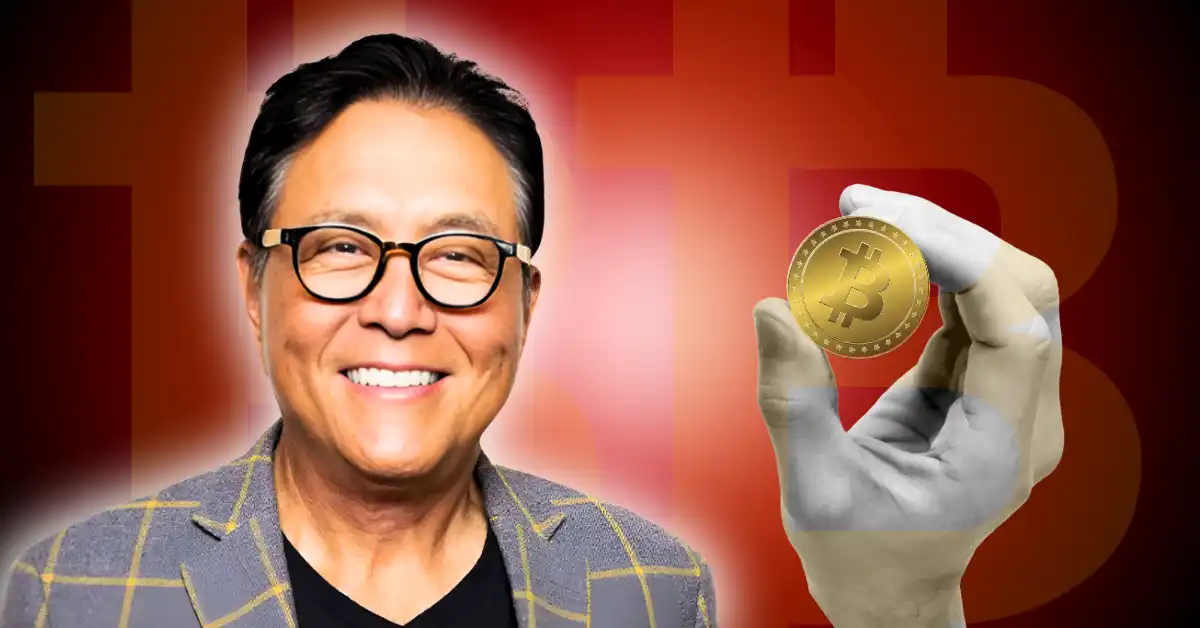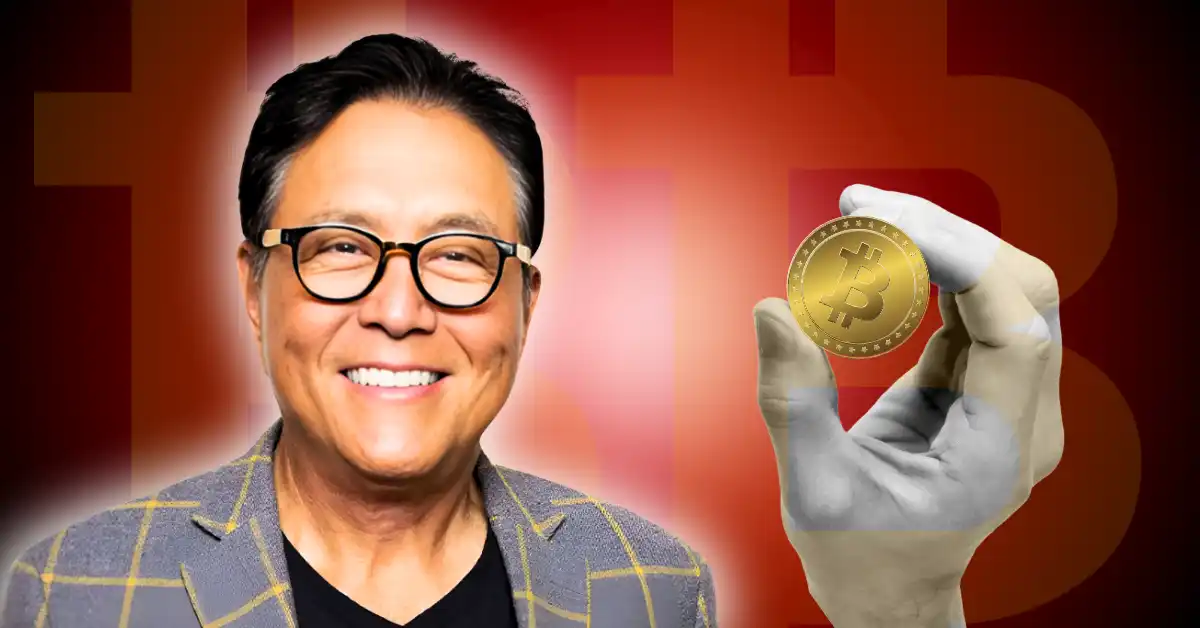The Economic Storm Clouds: Deciphering Robert Kiyosaki’s “Bubble Burst” Prediction
Understanding the Economic Landscape
The global economy operates on a delicate balance of supply, demand, and investor sentiment. In recent years, this balance has been disrupted by unprecedented monetary policies, geopolitical tensions, and technological disruptions. Robert Kiyosaki, a prominent figure in the financial education space, has consistently warned about an impending economic crisis. His latest prediction centers around the concept of an “everything bubble,” a scenario where asset prices across various sectors are artificially inflated, disconnected from underlying economic fundamentals.
Kiyosaki’s warnings are not made in isolation. They resonate with a growing sense of unease among investors and economists alike. The COVID-19 pandemic, for instance, exposed the fragility of global supply chains and the interconnectedness of financial markets. The subsequent economic recovery, fueled by massive fiscal stimulus and accommodative monetary policies, has raised concerns about the sustainability of current asset valuations.
The Anatomy of a Bubble
To fully grasp Kiyosaki’s prediction, it’s essential to understand the mechanics of an economic bubble. A bubble occurs when asset prices rise to levels significantly higher than their intrinsic value, driven by speculative investment and investor exuberance. This phenomenon is often characterized by several key factors:
Excessive Money Printing
Central banks around the world have resorted to quantitative easing, a monetary policy tool that involves the purchase of financial assets by a central bank to inject money into the economy. While this policy aims to stimulate economic growth, it can also lead to excessive money printing, devaluing currency and driving up asset prices. Kiyosaki argues that the Federal Reserve and other central banks have created a “sea of fake money,” artificially inflating asset prices and setting the stage for a market correction.
Low Interest Rates
Artificially suppressed interest rates encourage borrowing and investment, further inflating asset values. Low interest rates make borrowing cheaper, leading to increased consumer spending and business investment. However, this can also lead to a misallocation of resources, as investors chase returns in riskier assets. Kiyosaki contends that the prolonged period of low interest rates has contributed to the current bubble, creating an environment where investors are willing to take on excessive risk.
Speculative Mania
Speculative mania refers to a widespread belief that asset prices will continue to rise indefinitely, leading to a self-fulfilling prophecy of rapid price appreciation, detached from intrinsic value. This phenomenon is often driven by fear of missing out (FOMO), as investors rush to buy assets they believe will appreciate in value. Kiyosaki warns that this speculative mania has permeated various asset classes, from stocks and real estate to commodities and cryptocurrencies.
Kiyosaki’s Core Argument
Kiyosaki’s argument essentially boils down to the belief that the current economic environment is unsustainable. He points to several factors that, in his view, will coalesce to trigger a massive market correction:
Overvalued Assets
Kiyosaki contends that stocks, real estate, and even commodities are significantly overvalued, driven by speculative investment and loose monetary policy. He argues that these assets are trading at levels that are disconnected from their underlying economic fundamentals, setting the stage for a market correction. His anecdote about a $14 egg salad sandwich serves as a potent symbol of this inflationary pressure, highlighting the disconnect between asset prices and the real economy.
Rising Inflation
Despite efforts to control it, inflation remains a persistent concern, eroding purchasing power and putting pressure on consumers. Kiyosaki argues that the current inflationary environment is not transitory, as some economists suggest, but rather a structural issue that will continue to plague the economy. He believes that the Federal Reserve’s accommodative monetary policy has contributed to this inflationary pressure, creating an environment where asset prices are artificially inflated.
Global Debt Crisis
Kiyosaki highlights the staggering levels of global debt as a ticking time bomb, suggesting that the inability to service this debt will trigger a cascading financial crisis. He argues that the current debt levels are unsustainable, and that a market correction is inevitable. His warnings echo those of other economists and financial analysts who have raised concerns about the long-term implications of excessive debt.
Historical Precedent
Kiyosaki often draws parallels to historical economic collapses, such as the Great Depression, suggesting that similar patterns are emerging in the current economic landscape. He argues that history has a way of repeating itself, and that the current economic environment bears striking similarities to past crises. His analysis is not without merit, as historical precedents can provide valuable insights into the potential trajectory of the current economic landscape.
The Potential Impact
If Kiyosaki’s prediction comes to fruition, the impact would be far-reaching. A market correction would not only affect investors but also have broader implications for the global economy. Some of the potential impacts include:
Stock Market Crash
A significant decline in stock prices would wipe out trillions of dollars in wealth, impacting investors of all sizes, from individual retail traders to large institutional funds. This wealth destruction could have ripple effects throughout the economy, affecting consumer spending, business investment, and employment.
Real Estate Decline
A drop in property values would hurt homeowners, particularly those with high mortgages, and could trigger a wave of foreclosures. This could have broader implications for the housing market, affecting homebuilders, real estate agents, and other stakeholders in the housing ecosystem.
Economic Recession/Depression
The combined effect of these asset declines could plunge the global economy into a severe recession or even a depression, characterized by high unemployment, reduced consumer spending, and widespread business failures. This could have long-lasting implications for economic growth, employment, and living standards.
Potential Winners and Losers
While Kiyosaki’s prediction paints a bleak picture, he also identifies potential winners in this scenario. He argues that those who hold real assets like gold, silver, and Bitcoin will be best positioned to weather the storm. His reasoning is that these assets:
Serve as a Hedge Against Inflation
As currencies devalue, precious metals and cryptocurrencies tend to retain their value, acting as a store of wealth. Kiyosaki argues that these assets can provide a hedge against inflation, protecting investors from the erosion of purchasing power.
Offer Protection from Government Intervention
Unlike traditional assets, which are subject to government control and regulation, precious metals and cryptocurrencies offer a degree of independence. Kiyosaki believes that these assets can provide a measure of protection against government intervention, allowing investors to preserve their wealth in the face of economic uncertainty.
Represent a Bargain After the Crash
Kiyosaki believes that the market crash will create opportunities to buy these assets at significantly discounted prices. He argues that investors who are prepared to take advantage of these opportunities will be well-positioned to benefit from the subsequent market recovery.
A Critical Examination
While Kiyosaki’s warnings resonate with many, it’s essential to approach them with a critical eye. Several factors cast doubt on the accuracy of his predictions:
History of Inaccurate Forecasts
As pointed out by numerous financial news outlets, Kiyosaki has a history of making bold predictions that have failed to materialize. His claim of an October 2021 crash, for instance, proved incorrect. While his analysis may highlight legitimate concerns, his track record raises questions about the accuracy of his predictions.
Sensationalist Rhetoric
Kiyosaki often employs sensationalist language and hyperbole, which can undermine the credibility of his arguments. Terms like “everything bubble” and “biggest crash in history” are designed to grab attention, but may not accurately reflect the underlying economic realities. This sensationalist rhetoric can obscure the nuances of the economic landscape, leading to a distorted understanding of the issues at hand.
Self-Serving Promotion
Kiyosaki’s predictions often coincide with the promotion of his books, seminars, and investment recommendations, raising questions about his motives. While his analysis may be based on legitimate concerns, the timing and context of his predictions suggest that they may be motivated by self-interest.
Alternative Perspectives
While Kiyosaki paints a bleak picture, other economists and financial analysts offer more nuanced perspectives. Some argue that:
The Economy is Resilient
Despite challenges, the global economy has demonstrated resilience in the face of adversity. Technological innovation, increased productivity, and globalization continue to drive economic growth. These factors can help mitigate the impact of economic shocks, providing a buffer against market volatility.
Inflation is Transitory
Some economists believe that the recent surge in inflation is temporary, driven by supply chain disruptions and pent-up demand following the pandemic. As these factors subside, inflation is expected to moderate. This perspective suggests that the current inflationary environment is not a structural issue, but rather a temporary phenomenon that will resolve itself over time.
Central Banks Can Manage the Situation
Central banks possess the tools and expertise to manage monetary policy and prevent a catastrophic market crash. By gradually raising interest rates and reducing their balance sheets, they can cool down the economy without triggering a recession. This perspective suggests that central banks are capable of navigating the current economic landscape, mitigating the risk of a market correction.
Preparing for Uncertainty
Regardless of whether Kiyosaki’s prediction proves accurate, it’s always prudent to prepare for economic uncertainty. A balanced approach involves:
Diversifying Investments
Spreading investments across different asset classes can reduce risk and protect against market volatility. This strategy can help investors weather economic storms, preserving their wealth in the face of uncertainty.
Maintaining a Cash Reserve
Having a cash reserve can provide a cushion during economic downturns and allow you to take advantage of investment opportunities. This strategy can help investors navigate market volatility, providing liquidity when it’s needed most.
Reducing Debt
Paying down debt can improve your financial stability and reduce your vulnerability to rising interest rates. This strategy can help investors weather economic storms, preserving their wealth in the face of uncertainty.
Staying Informed
Staying informed about economic trends and market developments can help you make informed investment decisions. This strategy can help investors navigate market volatility, providing the information they need to make sound financial decisions.
Seeking Professional Advice
Consulting with a qualified financial advisor can provide personalized guidance and help you develop a financial plan that aligns with your goals and risk tolerance. This strategy can help investors navigate market volatility, providing the expertise they need to make sound financial decisions.
Conclusion: Navigating the Economic Storm
Robert Kiyosaki’s “bubble burst” prediction serves as a stark reminder of the inherent volatility of financial markets. While his pronouncements should be taken with a grain of salt, his warnings touch upon legitimate economic anxieties. Whether a catastrophic crash is imminent remains to be seen. By adopting a balanced approach to investing, staying informed, and seeking professional advice, investors can navigate the waves of uncertainty and position themselves for long-term financial success. The key lies not in blindly following predictions, but in understanding the underlying economic forces and making informed decisions based on your individual circumstances. In the end, the ability to weather economic storms lies not in predicting the future, but in preparing for it.












